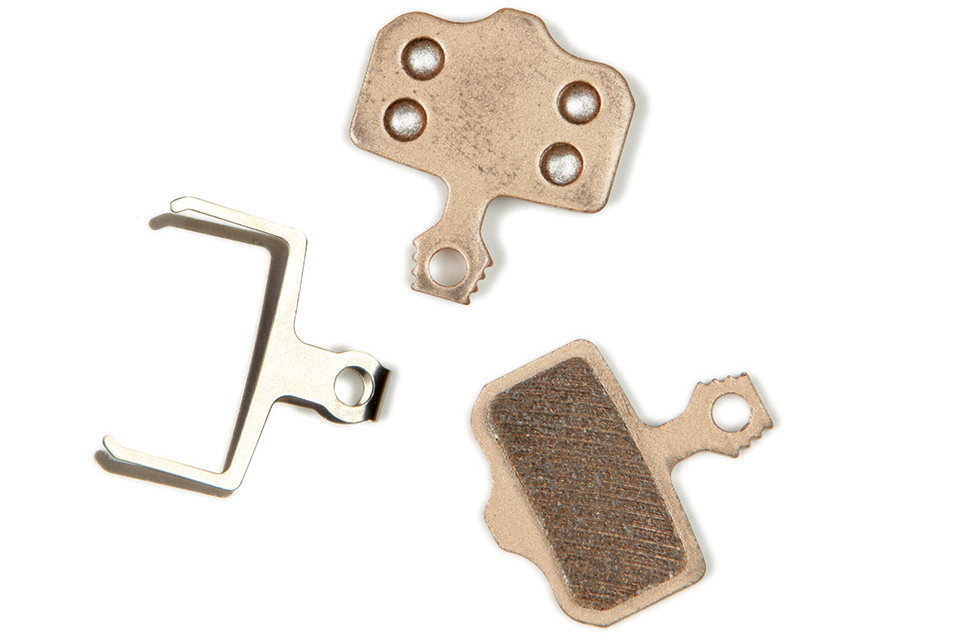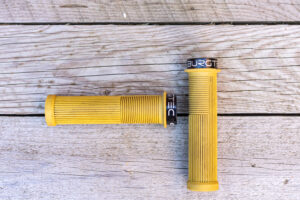You don't need to remortgage your house to spruce up your pride and joy. These ten best mountain bike upgrades are guaranteed to be good for your bike and your bank balance.
Here are ten upgrades that will transform your ride and protect your purse: tyres, cockpit, saddle, brake pads, cleats, pedal pins, gear cabling, plastic pedals, rotors, tubeless and grips.
If upgrading your current bike feels like it might a waste of time and money, head over to our guide on choosing the best mountain bike and think about starting afresh.

Loads of brands have excellent tyres these days, but finding the best compromise for your riding style and terrain can be tricky.
1. Upgrade your tyres (from £40)
The tyres that come fitted as original equipment on bikes are always a compromise in terms of optimum terrain, durability and rolling speed. As such they may not the perfect for your needs. So upgrading a front tyre could transform your grip levels, allowing you to descend faster and corner harder. While changing the rear tyre could give you more climbing traction, better puncture-resistance or faster rolling. Carefully choose your rubber compound and sidewall thickness according to where and how you ride, then you can always keep the tyre you’ve taken off to use as a spare.
For a more in-depth list of recommended rubber head over to our buyer’s guide to the best mountain bike tyres.

Converting to tubeless is not (always) the sweaty, messy, rage-inducing chore it used to be.
2. Go tubeless (from £30)
New bikes often come with inner tubes fitted, so the sealant doesn’t dry up in transit and the tyres don’t go flat on the showroom floor. But you can unlock easy weight savings and improved puncture resistance by converting them to tubeless before you hit the trails. Most new bikes will come with tubeless-ready rim tape installed, and some will even come with tubeless valves in the box, but if not you can buy them individually or as a kit. You’ll also need a bottle of tubeless sealant to complete the job. Buying one of the best tubeless charger pumps will also make the conversion painless.
For a more in-depth list of recommended models, head over to our buyer’s guide to the best tubeless sealants.

Burgtec’s MK4 Composite pedals are as good as the metal versions but half the price.
3. Buy a set of plastic flat pedals (from £20)
A good set of metal flat pedals can cost around £100, but slash that spending with composite versions of your fave design. DMR, Burgtec and HT have grippy, durable and lightweight composite pedals for as little as £30 and they can actually end up lighter and more durable than their alloy counterparts in some cases.
For a more in-depth list of recommended models, head over to our buyer’s guide to the best mountain bike flat pedals

Tweak your riding position with a new bar and/or stem.
4. Upgrade your cockpit (from £100)
While stock cockpits are much better nowadays – including shorter stems for more direct steering, and wider bars for more control in the rough – it can still be worth customising your contact points to suit your riding style and position. Changing a stem length, stem rise, bar width, bar rise or even bar geometry, can let you tune your weight balance and get you in the right place for more confident riding. Read our guide to mountain bike geometry and weight balance to find out more.
For a more in-depth list of recommended models, head over to our buyer’s guide to the best mountain bike stems and the best mountain bike handlebars

SDG’s Bel Air saddle has been a fave of mbr staffers for some years now.
5. Upgrade your saddle (from £50)
If you’re not sitting comfortably, then you’re always going to be in a bad mood when you’re riding. Or worse, you could pick up an injury that will prevent you riding. While saddle choice is a personal thing, we have firm and not-so firm favourites, like the SDG Bel Air 3.0 or the Specialized Bridge – they’re a great place to start.
For a more in-depth list of recommended models, head over to our buyer’s guide to the best men’s mountain bike saddles and the best women’s mountain bike saddles.

Ergon’s grips can be rotated to alter your position on the bike.
6. Upgrade your grips (From £15)
Just as tyres are your bike’s principle contact with the ground beneath you, your grips are your first point of contact between you and your bike. Despite this, they can often be places where manufacturers save money. Ditch the hard and slippery cheap ‘n’ nasty grips off your bike and slide on some rubbery joy. Not only will you feel more secure, but you may even improve comfort as well.
For a more in-depth list of recommended models, head over to our buyer’s guide to the best mountain bike grips

SRAM’s HS2 rotors are thicker than standard, so they last longer, dissipate heat more effectively, and can improve power.
7. Upgrade your brakes with bigger disc rotors (from £20)
If your brakes lack bite, or overheat on long descents, you could try increasing your rotor size. This is also a great mod if you are planning on taking your bike to the alps. You have the opportunity to save weight by choosing a rotor with an alloy spider should that be important, and don’t forget you’ll probably need adaptors to space the calipers away from the frame.
For a more in-depth list of recommendations, head over to our buyer’s guide to the best mountain bike disc rotors.

With the right compound brake pad you can save money and stop more effectively.
8. Upgrade your brake pads (from £10)
You don’t have to get down to the metal backing for brake pads to fail; they pick up contaminants and wear unevenly too. Replace with some organic pads if you want maximum bite and quiet efficiency in the dry. Or go with sintered metal pads if you want durability and wet weather performance. Or do what some riders do: go organic up front and sintered in the rear.

That fresh cleat feeling and don’t end up locked into your pedals in a crash.
9. Fit fresh cleats or upgrade to longer flat pedal pins
New cleats can return clip-in pedals to their former glory, bringing back that positive connection and making you feel faster and more secure. And for flat pedal riders, a set of fresh (and longer) pins for your flats can really up the grip and feel factor.
For a more in-depth information, head over to our buyer’s guide to the best mountain bike clipless pedals and best mountain bike flat pedals.

Fresh cables can make your shifting feel like new again.
10. Upgrade your gear cables and outer casing (from £10)
Cables stretch over time and water and grit can get inside the outer too, making even the poshest of shifters and dropper posts feel slow and clunky. Swap them out for a Shimano or Jagwire or Fibrax mtb gear cable set and feel like you’re in charge again!
With one or more of these upgrades, you’ll love your mountain bike – and your mountain biking – even more than you did before. Bargain!















